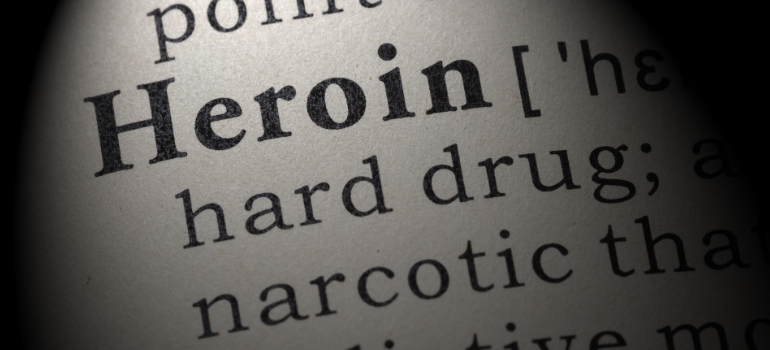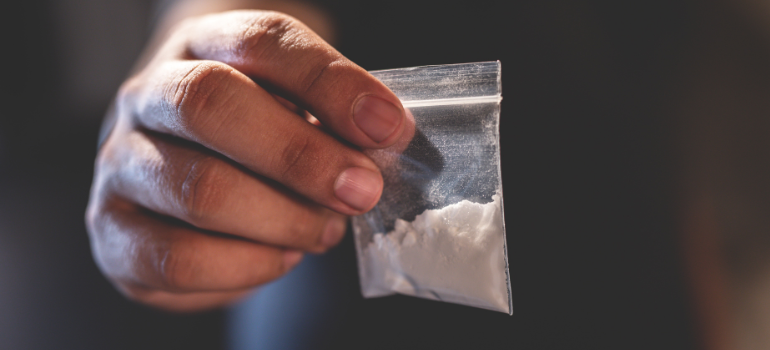How Long Does Heroin Stay in Your System?
If you’re searching for information on “how long does heroin stay in your system?” it’s possible you’re facing a moment that calls for both attention and action. This question often arises when confronted with the reality of an upcoming drug test or a moment of introspection regarding health and lifestyle choices. The presence of heroin in the body extends beyond its fleeting high, impacting both physical and psychological wellbeing over time. Through this article, we aim to provide a comprehensive answer to this critical question, offering not just the scientific facts but also a moment for reflection. It’s a chance to consider not just the immediate implications for health and legal standing but also the broader aspects of personal well-being and the path toward recovery.
Jump to Section
What is heroin?
Heroin, an illicit substance widely recognized for its high addiction potential, emerges from morphine, a natural compound found in certain poppy plants. It usually appears in powder form, ranging in color from white to brown, or as a black, sticky substance. Its chemical name, diacetylmorphine, points to its origin as a diacetyl ester of morphine. Upon entering the human body, heroin is quickly metabolized back into morphine, unleashing its potent opioid effects by crossing the blood-brain barrier to activate the brain’s opioid receptors. This action underlies the drug’s highly addictive nature. However, it’s critical to highlight that street heroin often contains impurities, including potentially lethal additives like fentanyl, which exacerbate its dangers.

The History of Heroin Use
Opium and its derivatives, including laudanum, codeine, and morphine, have been used throughout history, especially between the 16th and 19th centuries, to treat physical pain, cough, and diarrhea. Heroin was first produced as we know it today in 1874 by English researcher C.R. Wright. He boiled morphine and acetic anhydrate for several hours. A couple of decades later, in 1898, Bayer, a laboratory in Germany, introduced the substance to the market for medical use as a treatment for tuberculosis and other respiratory diseases.
By the end of the 19th century, however, the medical community started to become aware of the dangers of both opiates and heroin. As the number of people with an addiction to this specific substance began to grow in the United States, the Federal Government passed the Heroin Act in 1924. It prohibited its production, use, and possession for medical purposes.
The substance’s availability significantly reduced between 1920 and 1930. This impacted the shipment of illegal supplies from abroad, which the Second World War intensified further.
What are the primary effects and reasons for using Heroin?
Many people start using heroin drawn to its immediate, compelling effects, which include:
- A rush or wave of intense pleasure or euphoria.
- Pain relief and numbness.
- Sedation and a sensation of relaxation.
- Drowsiness, low blood pressure, nausea, and vomiting.
- Suppression of the cough reflex, which is a reflection of respiratory depression and one of the most dangerous side effects of heroin.
However, these effects are accompanied by severe health risks, including addiction, overdose, respiratory depression, and death.
Use Demographics
Heroin affects people from all walks of life, but it’s especially common among young adults, ages 18 to 25. Nowadays, more older adults and women are starting to use heroin as well. While it used to be more prevalent in white communities, now Black and Hispanic people are also increasingly affected.
The reasons behind heroin addiction are complex and include various factors, such as economic struggles like joblessness and poverty, which are closely linked to higher heroin use. The drug’s easy availability and some people moving from prescription painkillers to heroin make the issue worse. Additionally, those dealing with mental health problems or past traumas are more likely to use heroin, showing how personal challenges and bigger problems in society are deeply connected with drug addiction.
Misconceptions
If you’re dealing with heroin addiction, it’s important to clear up common myths that might block your way to getting better:
- The truth about purity: It’s a widespread myth that street heroin is consistently pure. In reality, it’s frequently mixed with harmful substances like fentanyl, making it far more dangerous.
- The real risks: You might hear that heroin is less dangerous than other drugs, but the truth is, it’s highly addictive, significantly increases the risk of overdose, and can lead to the spread of diseases.
- Understanding tolerance and dependence: Heroin’s lasting impact on the body complicates how tolerance and dependence develop, differing markedly from other substances.
- The illusion of control: It’s easy to believe you can manage your heroin intake, but the unpredictable purity and potency of street heroin make this extremely risky.
- Feeling immune: Believing that you’re unaffected by heroin’s harmful effects is a perilous assumption, particularly for those with certain mental health conditions.
Recognizing these facts is key. If you or someone you know is struggling, considering professional help is a significant step. Heroin rehab in Pennsylvania can provide the support and resources needed for a successful journey towards recovery.

How Long Does Heroin Last in the Body?
The time heroin stays in your body varies based on individual factors like your metabolism and how frequently you’ve used the drug. If you’ve used heroin heavily in the past, it might be detectable in your system for a longer period. Several other aspects can influence how quickly your body processes and eliminates heroin, including:
- How well you stay hydrated
- The method you used to take the drug
- The amount you took
- The purity of the heroin
- Your liver health
- And whether you’ve used other drugs alongside it
Generally speaking, heroin could be out of your system in about three days. But you might start to feel withdrawal symptoms as soon as six hours after your last dose. There are various drug tests available to check for heroin use, which we’ll cover in more detail later.

Heroin Half-Life: The Key to Understanding How Long Heroin Stays in Your Body
The concept of “half-life” is key to grasping how long heroin remains in your system. So, what exactly is half-life? It refers to the duration needed for half of a substance to be processed and cleared from your body. Heroin quickly breaks down into various substances, including morphine, and undergoes fast processing, mainly in the liver. The by-products of this metabolism are then excreted through urine and feces.
This rapid breakdown also explains why heroin’s effects hit quickly, delivering the intense euphoria that makes the drug so addictive. Yet, even after these effects wear off, half of the heroin still lingers in your system.
Heroin’s half-life is why drug tests can detect traces in urine for days after use. Laboratories can identify these traces, but this doesn’t immediately indicate recent use. This characteristic of heroin not only contributes to its addictive nature but also to the high risk of overdose. Even if you’re no longer feeling high and are craving another dose, a significant amount of the drug may still be in your body, raising the risk of taking too much.
Heroin Side Effects
Heroin’s impact on the body and mind can be immediate and long-term, affecting various aspects of health:
Immediately after use, you might experience:
- A rush of euphoria
- Feelings of sedation and drowsiness
- Relief from pain
- Dry mouth
- Small, pinpoint pupils
- Nausea and vomiting
- Itching or skin flushing, often due to histamine release
- Slowed and shallow breathing, which is a serious risk as it can lead to respiratory failure, coma, or even death
- Low blood pressure, potentially causing dizziness or fainting
- Confusion and difficulty thinking clearly
Over time, regular heroin use can lead to:
- A higher chance of catching infectious diseases like HIV or hepatitis from unsafe injection practices.
- Heart problems, including inflammation of the heart lining, vein damage, and a higher risk of heart attacks and strokes.
- Lung issues such as pneumonia and other infections, along with breathing problems.
- Digestive problems, including chronic constipation and other stomach issues.
- Mental health challenges, with an increased likelihood of depression, anxiety, PTSD, and problems with thinking and memory.
For those considering quitting, understanding the physical effects of heroin withdrawal is crucial, as it is a significant step towards recovery.

How Heroin Affects Mental Health and Behavior?
Heroin use, particularly over the long haul, can profoundly impact your mental health and brain function. It’s known to worsen or potentially trigger a range of mental health issues, including various forms of anxiety, depression, PTSD, and CPTSD. The latter conditions may not only stem from pre-existing trauma but also from the stressful and often dangerous environments associated with obtaining and using heroin.
The drug can also lead to cognitive decline, manifesting as weakened memory, shortened attention spans, and compromised decision-making skills. Seeking help from professionals can mitigate the effects of heroin use on mental health. A quality rehab center in Pennsylvania, for example, would offer a comprehensive treatment plan focusing on both physical and mental recovery.
Detection Windows for Heroin
As we have previously discussed, various factors influence the detectability of heroin across multiple drug tests. Among them is the administration of the drug. Heroin can be:
- administered through an IV drip,
- smoked or inhaled,
- snorted,
- in rare cases, ingested orally.
There are also several types of drug tests. Heroin will persist the most time in hair drug tests, which are generally used to test length of consumption over how recent the last use of the drug was. This is so because traces of heroin metabolites can be found in hair follicles for up to 90 days after the previous use. In the second place, heroin traces will persist the longest in urine, where they can be detected for up to 2 to 4 days after the last usage. In blood tests, heroin metabolites can show up within a few hours up to a day after usage, and in saliva, it can show up within 24 to 48 hours after the last usage.
Heroin Detox and Addiction Treatment
A team of skilled professionals will assess your suitability for MAT detox treatment, potentially leading to admission to an inpatient rehab facility. In certain cases, inpatient treatment might not be necessary, allowing for the option of a partial hospitalization rehab program in Pennsylvania. During this period, experienced doctors and nurses specializing in heroin detox will provide medications to mitigate the withdrawal symptoms associated with quitting heroin.
Throughout your stay, you’ll engage in a variety of therapeutic activities, including talk therapy and art therapy, while also learning new techniques to manage life’s pressures without resorting to drug use. Although the detox process from heroin typically spans a few weeks, ongoing support is crucial. As such, exploring options for long-term drug rehab in Pennsylvania is advisable to ensure sustained recovery.

The Importance of Seeking Professional help
Starting on the road to recovery from heroin addiction begins with the first, critical step: detox. This phase is about more than just clearing the drug from your body; it’s about setting a strong foundation for the healing process that follows.
For those seeking a comprehensive approach to recovery, inpatient drug rehab centers in Pennsylvania are available to provide the necessary support. These centers offer a blend of medical care, therapy, and support, tailored to meet the needs of each individual. They focus on both the physical and psychological aspects of addiction, ensuring a holistic approach to recovery.
Your journey to beat heroin addiction isn’t just about finding out how long heroin stays in your system; it’s about seeing why this matters for your overall recovery. When you commit to a structured treatment plan and find the right support, you can find your way to a life without heroin. With your dedication and the proper resources, a healthier future is within reach.